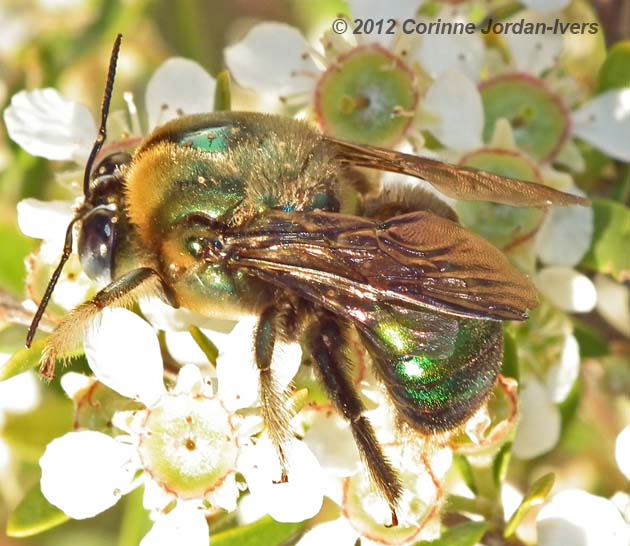Erica Siegel's stunning photographs below capture the startling colours of these metallic peacock blue-green carpenter bees! They look so real you could almost touch them!
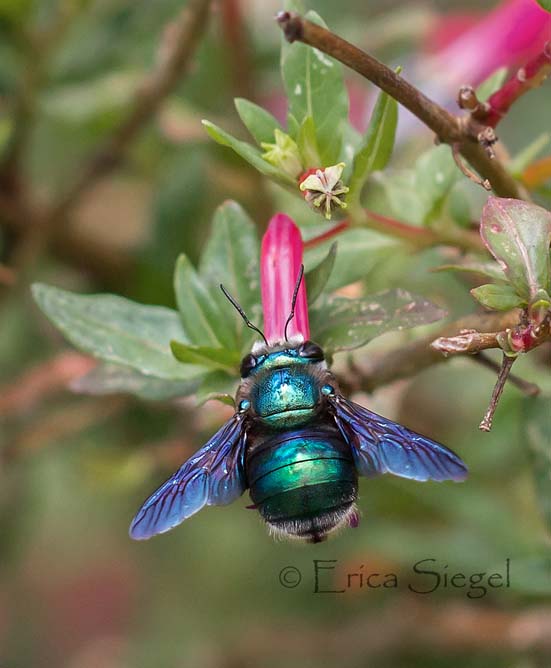
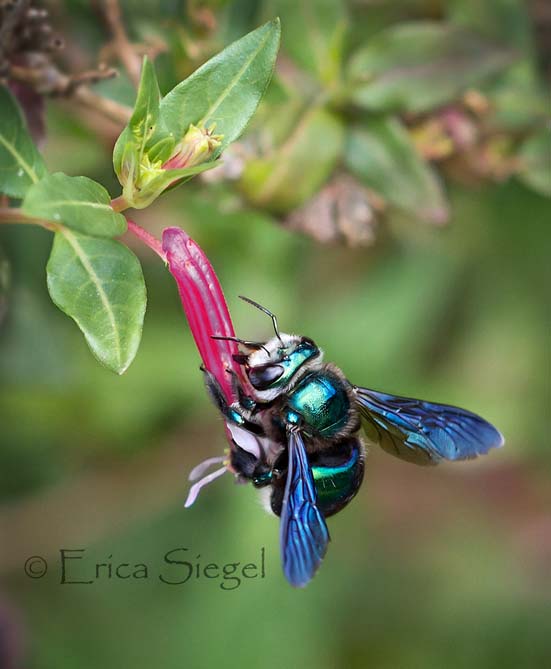
Corinne Jordan-Iver's fabulous photographs (below) show almost every hair on this carpenter bee!
Bees collect pollen for feeding their young and the hairs on their bodies help them capture this precious powdery protein resource. Here they are visiting Leptospernum flowers near Glen Innes, NSW. Female carpenter bees have a thick tuft of black hair on their hind legs for carrying the pollen back to their nests in burrows inside soft dead timber.
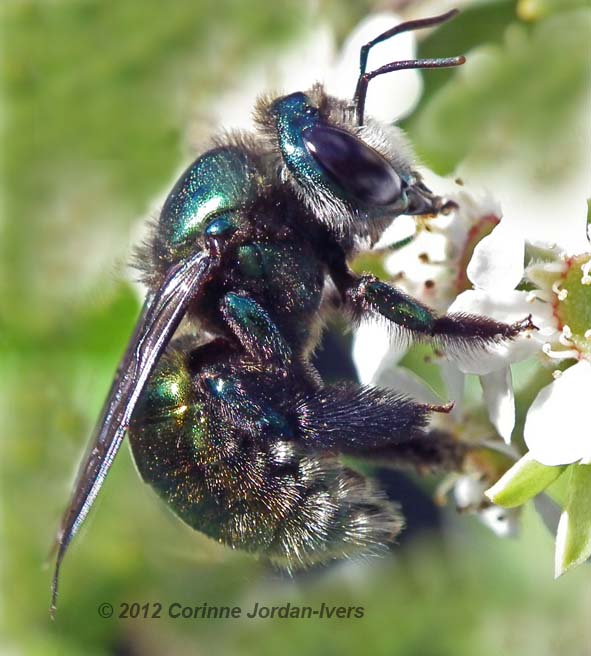
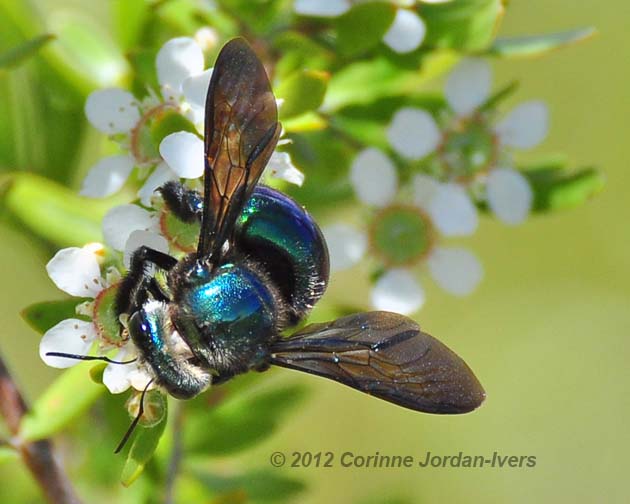
The females of these carpenter bees (Xylocopa (Lestis)) have shiny metallic blue green bodies with relatively little surface fur. In contrast the males of these species have yellow fur on their thorax, making them look quite different.
Corinne Jordan-Ivers captured the following rare photograph of a female (upper bee) and a male (lower bee) feeding together! This wonderful photograph, taken in NSW, clearly shows the differences between these bees.
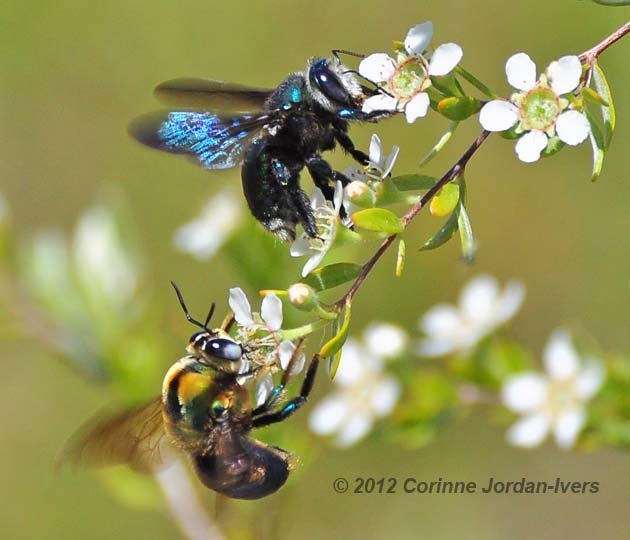
See the fine yellow fur on the male bee in Corinne's photograph below! This bee is having a few problems with mites. You can see these tiny mites as small white spots on the bee's thorax. Corinne says that the mite, Sennertia leei, is associated with this species of bee.
Finally, enjoy Erica Siegel's delightful images, below, of carpenter bees so artistically captured on these pink flowers!
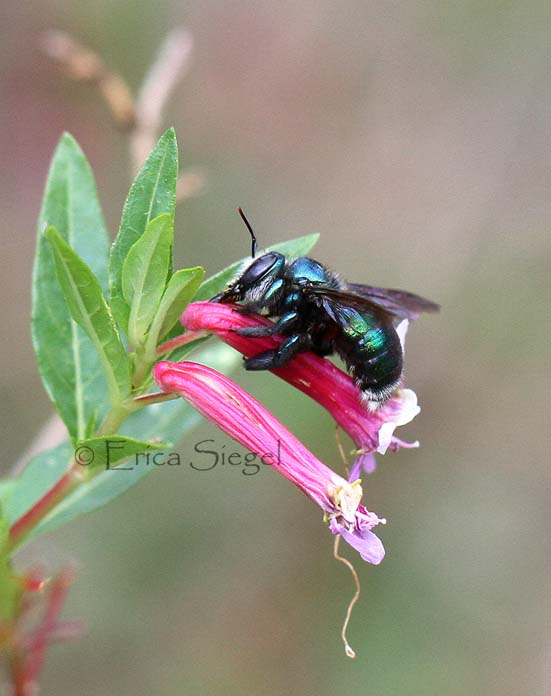
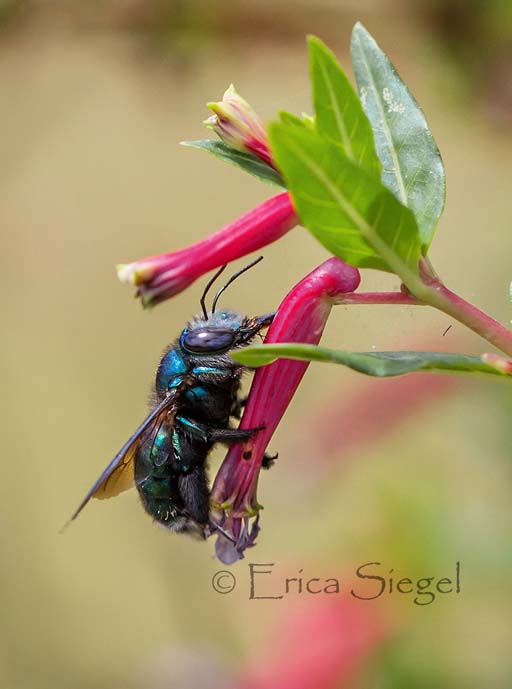
© 1997-2018 Australian Native Bee Research Centre
PO Box 74, North Richmond NSW 2754, Australia
|
|
|





